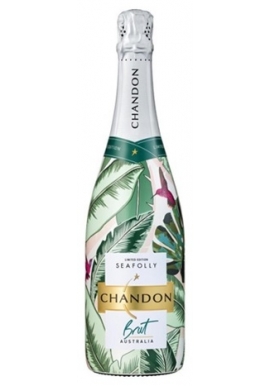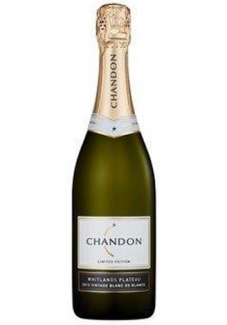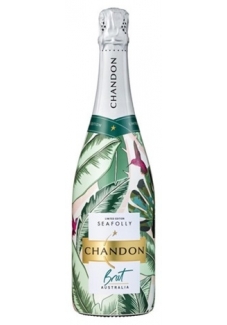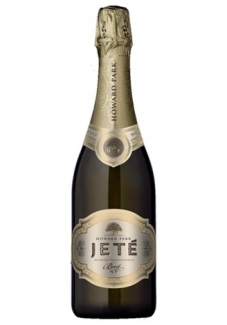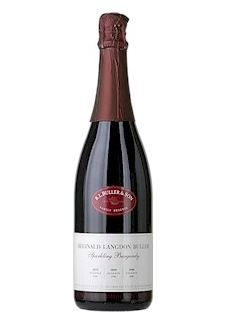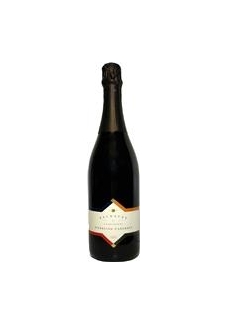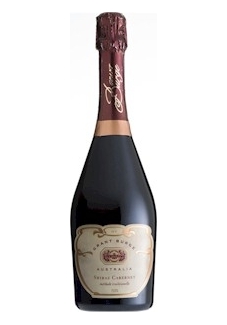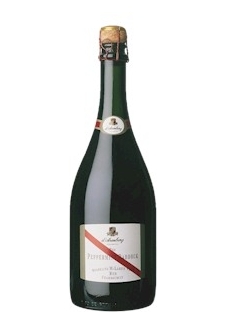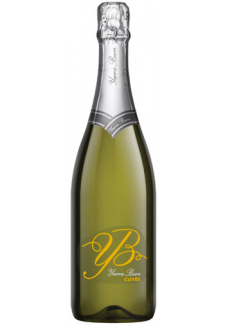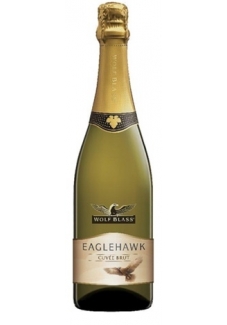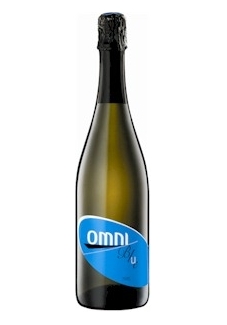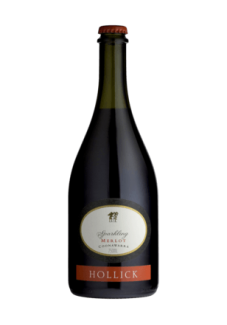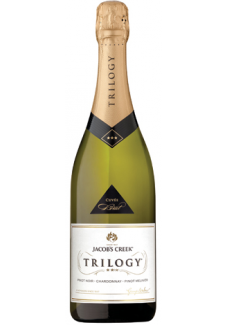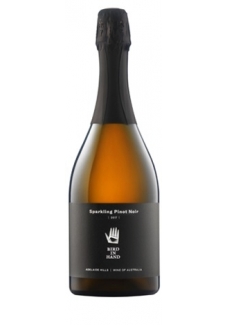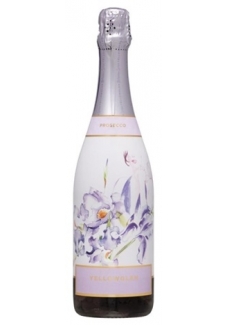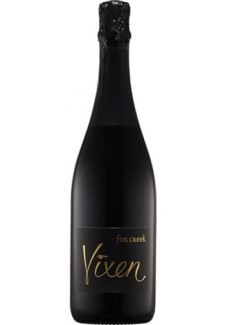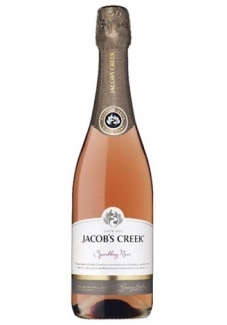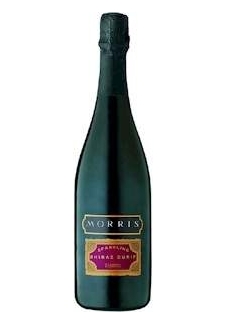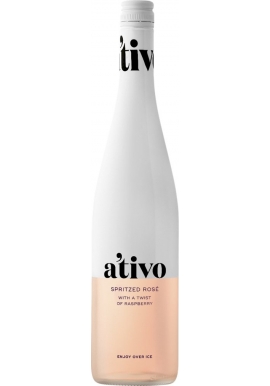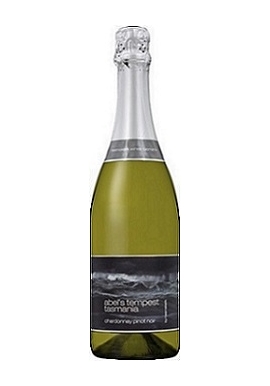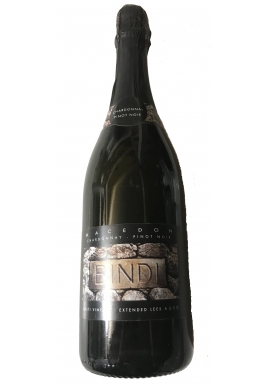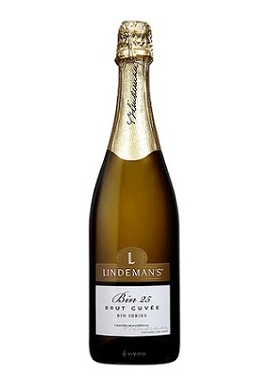AUSTRALIAN SPARKLING
- Sparkling Blanc de Blancs
- Sparkling Blanc de Noirs
- Sparkling Brut
- Sparkling Brut Reserve
- Sparkling Burgundy
- Sparkling Cabernet
- Sparkling Cabernet Shiraz
- Sparkling Chambourcin
- Sparkling Chardonnay
- Sparkling Cuvee
- Sparkling Cuvee Brut
- Sparkling Frontignac
- Sparkling Merlot
- Sparkling Moscato
- Sparkling NV~Non Vintage
- Sparkling Pinot Meunier
- Sparkling Pinot Noir
- Sparkling Pinot Chardonnay
- Sparkling Pinot Shiraz
- Sparkling Prosecco
- Sparkling Reds
- Sparkling Rose
- Sparkling Saperavi
- Sparkling Shiraz
- Sparkling Shiraz Durif
- Sparkling Vintage Brut
The best Australian sparkling wines are being made increasingly from cold climate grapes grown in Tasmania and high altitude and or southerly parts of Victoria. These wines often stand stand comparison with good non vintage Champagne, albeit with a decidedly Australian character.
The importance of the right varietal base (Chardonnay, Pinot Noir,...
The best Australian sparkling wines are being made increasingly from cold climate grapes grown in Tasmania and high altitude and or southerly parts of Victoria. These wines often stand stand comparison with good non vintage Champagne, albeit with a decidedly Australian character.
The importance of the right varietal base (Chardonnay, Pinot Noir, and less importantly Pinot Meunier) has been handsomely demonstrated in Australia.Australian sparkling wines have gone through several phases of development. Increasingly, the finest sparkling wines are made from Tasmanian grapes, with Macedon, the Yarra Valley, from Victoria and Adelaide Hills from South Australia other super - premium sources.
Domaine Chandon in the Yarra valley shares with Moet & Chandon a wine style with a style which emphasises mid palate softness without compromising a crisp, clean, and long finish. Its methods of achieving this have evolved and changed over fifteen years, as have the sources of its grapes.
As a consequence of targeting even cooler regions than the Yarra Valley including Tasmania, the high Strathbogie Ranges,and the Upper Yarra, a weighted average of thirty per cent of the base wines are taken through malolactic fermentation, with pinot Noir to the fore.Care is now taken to avoid bronze colouring in the key cuvees, which are brighter straw yellow.
Australian sparkling red wine is an Australian speciality and is altogether different, though no less enjoyable, than a sparkling white. Italian lambrusco is of similar style, but unlike Australian red sparkling wine, uses no oak.
First a good quality dry red is made in the same way as table wine. The wine is matured for a time in oak casks and, with the balance of flavours achieved, red wine is sent off to the sparkling winemaker to be turned into fizz.
The wine is allowed to mature further on less in the bottle and, once the lees are disgorged, the wine is topped up with dosage of sugar and wine to create a more complex character and palate feel.
Having retained some tannins during manufacture and often having a slightly higher alcohol content content than sparkling white wines, sparkling reds can keep quite well and can mature further after release onto the market.
Again it is a style best drunk young and chilled. Australian sparkling red wine is well worth experimenting with at the table as it is a good accompaniment to a wide range of meat dishes, hot and cold and in particular it is a good choice of poultry dishes.
AUSTRALIAN SPARKLING There are 5 products.
Subcategories
-
Sparkling Blanc de Blancs
Blanc de Blanc.... a French term referring to white wine made from white grapes. If the wine is a sparkling wine, it will be made from chardonnay or chenin blanc.
A truly dry apéritif style wine with a very long finish and attractive crisp dry balance.This elegant wine has a tight palate structure, great freshness, and incredible length and persistence.
Australian Sparkling Wine Blanc de Blanc is made the méthode traditionnelle style blended from individual parcels of cool climate chardonnay to create a fresh and elegant wine with a soft dry finish.Australian Sparkling Wine Blanc de Blanc has a fresh apple and citrus aromas with savoury yeast complexity and a delicate bead. It’s ideal for any celebration, or just sit, sip and relax.
-
Sparkling Blanc de Noirs
Australian Sparkling Wines Blanc de Noirs.... a white frequently very slightly pink - tinged wine made from red grapes by taking off the free run juice before pressing to minimize the uptake of red pigments from the skin.
Australian Sparkling Wine Blanc de Noir wine aims to emphasise fruit richness and softness. The nose features classic strawberries and cream with touches of rhubarb and bread.
The Blanc de Noir Sparkling Wine enters the mouth with a swirl of delicious fruit.Australian Sparkling Blanc de Noir has strawberries overtones and also have light touches of cherry and yeasty complexity with a finish that is both soft and dry.Australian Sparkling Blanc de Noir is perfect with trout mousse or salmon pate.
-
Sparkling Brut
Brut ... a French term for sparkling wines, it indicates very low level of sugar up to 15 grams per litre. There is no sugar present in Brut intergral or Brut zero Champagne.
For Australian Sparkling Wine it can be dry to sweet. “Brut” indicates a dry wine and is the standard style in Champagne as well as most Sparklings Wines. In addition it may also be referred to as Sparkling “Extra Dry” but, contrary to what you might expect, this means “semi-dry” so is actually a little sweeter than Brut!
-
Sparkling Brut Reserve
Brut Reserve ... a French term for sparkling wines, it indicates very low level of sugar up to 15 grams per litre. There is no sugar present in Brut integral or Brut zero Champagne. However the reserve indicates the wine is special due to its rare vintage such as a longer maturation in oak, and some wineries still use them in the original sense.Still wines are stored in reserve from each vintage to blend into a future champagne base.
-
Sparkling Burgundy
Sparkling Burgundy reds are made exclusively from the Pinot Noir while the whites are produced from the Chardonnay. ... The red Burgundy is generally lighter in colour and style than most other reds.
Sparkling Burgundy is one of the unique wine styles of Australia. Made predominantly from Shiraz, Sparkling Burgundy is undergoing a well deserved renaissance in the marketplace.The first Australian Sparkling Burgundy's were made in Victoria, around the Great Western region, but many of the most popular styles have always come from McLaren Vale, where the rich, soft Shiraz is perfect for sparkling base.McLaren Vale Shiraz vines are the source for this intense, ripe fruit. A small amount of Cabernet Sauvignon is also used to add some complexity to the palate. The fruit is picked at optimum ripeness to encourage sweet fruit characters which are so important in Sparkling Burgundy.The base wine is made in much the same manner as the other full bodied dry reds at Andrew Garrett.
The fruit is allowed a fairly warm ferment to encourage colour and flavour extraction. The free run and pressing are blended together with ferment to encourage colour and flavour extractions, with the small amount of pressings juice giving the wine its backbone and structure. After malo-lactic fermentation the wine is placed in old French and American oak barrels for a period of 12 months before it is bottled with tirage liqueur and the secondary fermentation takes place in the bottle. After a period of 6 - 12 months on tirage the wine is disgorged and re - bottled for release.
The Andrew Garrett Sparkling Burgundy or now know as Sparkling Shiraz is one of Australia's most popular. It is full bodied with lovely ripe Shiraz character and a soft finish. The wine has a deep rich colour and an excellent mousse.Perfect with roast game meats and an absolute treat with the Christmas turkey and cranberry sauce. 13% alcohol volume.
-
Sparkling Cabernet
Australian Sparkling Cabernet wine has a firm intense tannic backbone and the fruit characteristic is enhanced and softened after blending with merlot. Cabernet grown in regions such as Coonawarra and Margaret River attains an inky - black, purple look as a young wine, deep aromas of blackcurrant, tobacco and capsicum and a fine tannic mouthfeel. It is long and satisfying, especially when matured in French oak casks which adds a spicy, vanillin taste and a more complex texture.
The Balnaves Sparkling Cabernet NV from the Coonawarra Region South Australia is an interesting Australian Sparkling Cabernet wine.
-
Sparkling Cabernet Shiraz
Australian Sparkling Blending Cabernet Sauvignon Shiraz with other softer, rounder tasting varieties can add complexity and change the style. Cabernet has a firm intense tannic backbone and the fruit characteristic is enhanced and softened after blending with merlot.
Cabernet grown in regions such as Coonawarra and Margaret River attains an inky - black, purple look as a young wine, deep aromas of blackcurrant, tobacco and capsicum and a fine tannic mouthfeel. It is long and satisfying, especially when matured in French oak casks which adds a spicy, vanillin taste and a more complex texture. This is the classic Bordeaux blend. In Australia the blend is more likely to be Shiraz.
-
Sparkling Chambourcin
Australian Sparkling Chambourcin is resistant to fingas and mould so its suits the humid, ocean affected areas of New South Wales coastline and Mc Laren Vale, South Australia.Cassegrain at Port Macquarie makes quite a lot of chambourcin in a rose style, which is nice and dry, and fuller bodied chambourcin which is typically soft,fruity and plummy. The only problem is the small production.
-
Sparkling Chardonnay
Australian Sparkling Chardonnay Wine is the world's favourite white varietal. Sparkling Chardonnay should be well balanced, without excessive oak, residual sweetness or alcohol. Australian Sparkling Chardonnay's value finesse, flavour persistence and complexity, the last being one of Chardonnay's key assets. An easy going kind of grape, the sparkling Chardonnay seems to want to please everyone.
-
Sparkling Cuvee
Cuvee a French term literally meaning a vatful, the word signifies a specific selection of wine that may or may not have been blended.Seen on many labels of Champagne or Sparkling Wines, this word simply indicates that the wine is a blend from different vineyards, vintages (to make NV) or wine parcels.
-
Sparkling Cuvee Brut
Australian Sparkling Cuvee Brut comes from the French term literally meaning a vatful, the word signifies a specific selection of wine that may or may not have been blended. The brut ... a French term for sparkling wines, indicates very low level of sugar up to 15 grams per litre. There is no sugar present in Brut integral or Brut zero Champagne.
-
Sparkling Frontignac
Australian Sparkling Frontignac is a special variety of the Muscat grown at Frontignan, which gives the wine more delicacy than most, but it is intensely sweet, one glass is as much as most people can drink. It is slightly fortified.Try Omni Blue Sparkling Frontignac
-
Sparkling Merlot
Australian Sparkling Merlot can have many finishes in vastly different styles ranging from light, very soft, juicy reds with little tannin to full black, fairly astringent wines which will take a while to mature.
Sparkling Merlot's flavour components are often described as plum, plum skin or stewed plum and velvety soft in the month.The Kies Family Sparkling Monkey Nut Merlot 2002 from the Barossa Valley Region of South Australia was a very interesting Australian Sparkling Wine
-
Sparkling Moscato
Sparkling Moscato, Muscatel, Muscadel or Muscadine has become increasing popular of late. The best Muscates come from Portugal, the south of France, the island around Sicily and of course Australia. Of all the varieties of grapes which are made into sparkling wine there is no family which stands apart as unmistakable to everybody. It is the Muscat. As a grape it is familiar as the tastiest of hot - house varieties. It is used for sparkling wine all over the Mediterranean - in Spain, Italy, Africa, Greece and all the islands - and in Portugal, Russia, California and indeed in Australia.They all have the same haunting, sweet quality which is called musky.
-
Sparkling NV~Non Vintage
Sparkling Non Vintage (NV) come from wine that is not made from the crop of a single identified district in a good year. Please note that "non-vintage blends are not necessarily inferior".
In comparison to Sparkling Vintage where harvests from a single year that are not blended with other years are referred to as “vintage”, showing the year of production on the label. Vintage wines, particularly from years when growing and harvesting conditions produced exceptional wines, are seen as premium, but there are many high-quality non-vintage (NV) wines too.
-
Sparkling Pinot Meunier
Pinot Meunier, also known as Meunier or Schwarzriesling, is a variety of black wine grape most noted for being one of the three main varieties used in the production of Champagne (the other two are the black variety Pinot noir and the white Chardonnay).
Until recently, producers in Champagne generally did not acknowledge Pinot Meunier, preferring to emphasise the use of the other noble varieties, but now Pinot Meunier is gaining recognition for the body and richness it contributes to Champagne.
Pinot Meunier is approximately one-third of all the grapes planted in Champagne.
It is a chimeric mutation of Pinot: its inner cell layers are composed of a Pinot genotype which is close to Pinot noir or Pinot gris; the outer, epidermal, layer is however made up of a mutant, distinctive, genotype.Pinot Meunier was first mentioned in the 16th century,and gets its name and synonyms (French Meunier and German Müller - both meaning miller) from flour-like dusty white down on the underside of its leaves.
-
Sparkling Pinot Noir
Australian Sparkling Pinot Noir is usually a red wine grape variety of the species Vitis vinifera. The name may also refer to wines produced predominantly from Pinot Noir grapes. The name is derived from the French words for 'pine' and 'black' alluding to the varietals' tightly clustered dark purple pine cone-shaped bunches of fruit.Pinot noir grapes are grown around the world, mostly in the cooler regions, but the grape is chiefly associated with the Burgundy region of France.
It is widely considered to produce some of the finest wines in the world, but is a difficult variety to cultivate and transform into wine.It is the mature Pinot Noirs complex flavours of the raspberries,strawberries,cranberries,violets,game,compost,all spice,tobacco and hay, coupled with its silky,velvety texture, that is so captivating.
The palate combines delicate citrus fruits with toasted brioche and creamy lees characters supported by a fine mineral acid structure, which produces an elegant, balanced wine with great length. Sparkling Pinot Noir is the most precocious of the fine wine grapes to grow and vinfy. Relatively low in tannin and acidity, it needs a cool climate.
-
Sparkling Pinot...
The mature Pinot Noirs complex flavours of the raspberries, strawberries, cranberries, violets, game, compost, all spice, tobacco and hay, coupled with its silky, velvety texture, that is so captivating. Pinot Noir is the most precocious of the fine wine grapes to grow and vinfy.
Relatively low in tannin and acidity, it needs a cool climate. this is then combined with Chardonnay which should be well balanced, without excessive oak, residual sweetness or alcohol. Australian sparkling chardonnay's value finesse, flavour persistence and complexity, the last being one of chardonnay's key assets. An easy going kind of grape, the Chardonnay seems to want to please everyone
-
Sparkling Pinot Shiraz
The combination of Pinot and Shiraz as a Sparkling Wine allows the mature Pinot Noirs complex flavours of the raspberries, strawberries, cranberries, violets, game, compost, all spice, tobacco and hay, coupled with its silky, velvety texture, to captivate the Pinot Noir as the most precocious of the fine wine grapes to grow and vinfy. Relatively low in tannin and acidity, it needs a cool climate.
This is then combined with the Shiraz to produce depth of colour and aroma.When young, the Shiraz displays floral and fruity raspberry notes.Once its matured, this evolves into notes of black pepper, leather, spices and game.Shiraz is a very versatile grape and can be grown in almost any climate, although yields need to be kept down and over ripeness must be avoided or the wine can become heavy, flabby and too tannic.Overall Shiraz is used both as single variety and in blends with goods results as a Sparkling Wine.
-
Sparkling Prosecco
With access to some of the very best vineyard land in the Australia such as King Valley many growers are able to produce and craft an authentic Prosecco with all the hallmarks this style has become famous for. The elevated terroir produces a sparkling that is both crisp and gentle, with delicate lemon-pear flavours. Lively acidity through the palate complemented by a terrific long finish. The Italian influence here is for all to see.The Prosecco is an Italian white wine. Prosecco history is its controlled designation of origin which can be spumante ("sparkling wine"), frizzante ("semi-sparkling wine"), or tranquillo ("still wine").It is made from Glera grapes, formerly known also as Prosecco, but other grape varieties may be included. The following varieties are traditionally used with Glera up to a maximum of 15% of the total: Verdiso, Bianchetta Trevigiana, Perera, Glera lunga, Chardonnay, Pinot Bianco, Pinot Grigio and Pinot Noir.The name is derived from that of the Italian village of Prosecco near Trieste, where the grape and wine originated.
Prosecco DOC is produced in nine provinces spanning the Veneto and Friuli Venezia Giulia regions. Prosecco Superiore DOCG comes in two varieties: Prosecco Conegliano Valdobbiadene Superiore DOCG, which can only be made in the Treviso province of Veneto on the hills between the towns of Conegliano and Valdobbiadene (north of Treviso), and the smaller Asolo Prosecco Superiore DOCG, produced near the town of Asolo.Prosecco is the main ingredient of the Bellini cocktail and can be a less expensive substitute for Champagne.It is also a key ingredient of spritz, a cocktail popular in northern Italy.
-
Sparkling Reds
The Red Sparkling range is the concentration of the red wine grape varieties which generally taste like the red fruit family, black and red cherry, red currant and blackcurrant,raspberry, strawberry and plum.
-
Sparkling Rose
Sparkling Rose, what the French and much of the rest of the world call rose wines are often called 'blush' or, more curiously, 'white' in the United States. The explanation for this is simple. In the late 1970's, once popular semi-sweet Portuguese pink wines such as Mateus and Lancers were going out of fashion. Rose, it seemed, was no longer flavour of the month. Sparkling Red wines made from the Zinfandel grape had also lost their appeal- so much so that the producers were even uprooting their vines. Fortunately for lovers of the grape and of pink wines, the winemakers at the Sutter Home Winery cleverly created a market for both - simply by making rose Zindandel and renaming it 'white'.
The way rose is produced is, in fact, very similar to the method for making red wine - except for the fact that the juice is drawn from the vat it is still fermenting and before it has had the chance to draw too much colour from the skins. Winemakers then have a choice.
They can either allow it to ferment only a little further before stopping the process and bottling the wine as a semi- sweet pink wine, such as Anjou rose. Or they can let it ferment completely as though it were to become a dry white. Rose made by either method is very unlikely to go into a new oak barrel, and nowadays is almost certainly fermented and stored in stainless steel tanks before being bottled within a few months of the harvest's few, highly exceptional roses improve with age. Most are best drunk as soon as they are brought. But overall Sparkling Roses are now making a major come back as an easy going drink that can be enjoyed with many meals.
-
Sparkling Saperavi
Australian Spartkling Saperavi grapes are used predominantly in Eastern Europe Georgia, but have spread to other regions of Eastern Europe more recently (Purcari, Moldova). Saperavi cultivars are also being grown in New World wine regions, notably in Finger Lakes, New York area vineyards. It has shown promising results for a few growers in Australia, where it was pioneered in the King Valley Region of North East Victoria.
It is an extractive wine with a characteristic bouquet, a harmonious taste, and pleasant astringency. Its alcoholic strength ranges from 10.5-12.5% and titrated acidity 5-7%. It is known to have been in production since 1886 in Eastern Europe. Saperavi grapes produce very deep red wines that are suitable for extended aging. It has the potential to produce high alcohol levels, and is often blended with lighter varieties. It is by far the most dominant Georgian red grape in terms of overall production.
Saperavi is a hardy variety, known for its ability to handle extremely cold weather and is popular for growing in high altitude and inland regions such as Kakheti. It is a teinturier grape, containing the red anthrocyanin within the grape pulp as well as the skin and is unusual in being one of very few such grapes used in single-varietal winemaking.
-
Sparkling Shiraz
Sparkling Shiraz or Syrah ... Why the dual name? Because while in France's Rhone Valley the grape is known by its French name of Syrah, once it crosses to Australia it is known as Shiraz. Those are two main homes, although it is rapidly catching the attention of winemakers elsewhere, and you'll find Syrah in Italy, Chile, Mexico, California, Spain, Southern France, South Africa, New Zealand, and even Switzerland. the last is the biggest surprise, because this grape really does like a warm climate.
The variety of tastes depends greatly. In the Rhone it is a smoky and minerally, in Australia it becomes richer and softer, more leathery and blackberryish. Californian examples usually lean towards the Australian prototypes ages very well, and good ones really need some years in the bottle to show their best.
The Shiraz grape overall makes a powerful, rich, full - bodied wines that are superb with full - flavored food. The classic barbecue wine, but the Shiraz also goes with roasts, game, hearty, casseroles and charcuterie. It can also be good with tangy cheeses.Chancellors Cellars is proud to present an extensive list of Australian and International wines.
-
Sparkling Shiraz Durif
Australian Sparkling combined Shiraz Durif wine, when combined becomes richer and softer, more leathery and black berryish. Californian examples usually lean towards the Australian prototypes ages very well, and good ones really need some years in the bottle to show their best.The Shiraz grape overall makes a powerful, rich, full - bodied wines that are superb with full - flavored food.
The classic Sparkling barbecue wine, but the Sparkling Shiraz Durif also goes with roasts, game, hearty, casseroles and charcuterie. It can also be good with tangy cheeses. Australian Durif perhaps has one of the most important planting of this grape,it produces a inky-black tannic wines which live well in the cellar.Of course it blends well with Shiraz, especially as a Sparkling Red.
-
Sparkling Vintage Brut
Sparkling Vintage Brut .. the Brut component is referred as a French term for sparkling wines, it indicates very low level of sugar up to 15 grams per litre. There is no sugar present in Brut integral or Brut zero Champagne. But the vintage can vary relative to quality, and the chief reason the drinker should want to know which vintage produced the wine is to tell its age. The vintage year classifies the character of the wine which changes completely from year to year
-
$135.95
A'Tivo Rose NV Sparkling 750ml x 6 A'Tivo Rose NV Sparkling...
A’tivo is the refreshing new Australian aperitif, perfectly crafted to be enjoyed over ice. A'Tivo Rose is light and refreshing and softly spritzed. A’tivo Spritzed Rosé has a refreshing raspberry infusion. A’tivo Rose is perfect for enjoying with friends over great conversation. A’tivo is the refreshing new...
-
$135.95
A'Tivo White NV Sparkling 750ml x 6 A'Tivo White NV Sparkling...
A’tivo is the refreshing new Australian aperitif, perfectly crafted to be enjoyed over ice. A'Tivo White Sparkling NV is a light and refreshing and softly spritzed. A’tivo Spritzed White has a twist of zesty lime. A’tivo is the refreshing new...
-
$219.95
Abel's Tempest Sparkling Chardonnay Pinot... Abel's Tempest Sparkling...
Abel's Tempest Chardonnay Pinot Noir Sparkling NV from Regional Tasmania,embodies the purity of Tasmania's fruit. Abel's Tempest Chardonnay Pinot Noir Sparkling NV has a racy acidity of chardonnay combined with the delicacy of pinot noir. Abel's Tempest Chardonnay Pinot Noir...
-
$89.95
Bindi Chardonnay Pinot Noir Sparkling... Bindi Chardonnay Pinot Noir...
Bindi Chardonnay Pinot Noir Cuvee has a light straw yellow colour. the bouquet has obvious bready savoury complexity, the powerful and intense palate showing the degree of time the wine has spent on lees, and the acidity is very much better balanced than that of the Cuvee 111. Bindi Chardonnay Pinot Noir Cuvee has...
-
$99.95
Lindeman's Bin 25 Sparkling Brut Cuvee... Lindeman's Bin 25 Sparkling...
Lindeman’s Bin 25 Brut Cuvée features aromas of nectarine and citrus notes, while the palate exudes stone fruit and citrus with a full and creamy mouth feel. The cooler weather and delayed ripeness favoured good varietal fruit flavour development in the whites and strong varietal fruit flavour and good colour, across the main stream red varieties Lindeman’s Bin 25 Brut Cuvée features...
ABN: 11 806 263 393
Liquor Licenses
337 526 06
360 674 16
